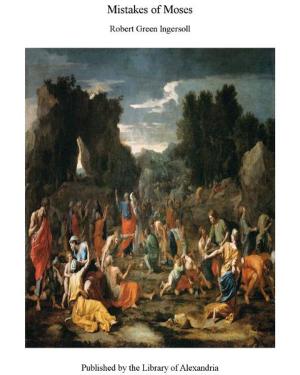The Psychology of Arithmetic
Nonfiction, Religion & Spirituality, New Age, History, Fiction & Literature| Author: | Edward L. Thorndike | ISBN: | 9781465524775 |
| Publisher: | Library of Alexandria | Publication: | March 8, 2015 |
| Imprint: | Language: | English |
| Author: | Edward L. Thorndike |
| ISBN: | 9781465524775 |
| Publisher: | Library of Alexandria |
| Publication: | March 8, 2015 |
| Imprint: | |
| Language: | English |
Within recent years there have been three lines of advance in psychology which are of notable significance for teaching. The first is the new point of view concerning the general process of learning. We now understand that learning is essentially the formation of connections or bonds between situations and responses, that the satisfyingness of the result is the chief force that forms them, and that habit rules in the realm of thought as truly and as fully as in the realm of action. The second is the great increase in knowledge of the amount, rate, and conditions of improvement in those organized groups or hierarchies of habits which we call abilities, such as ability to add or ability to read. Practice and improvement are no longer vague generalities, but concern changes which are definable and measurable by standard tests and scales. The third is the better understanding of the so-called "higher processes" of analysis, abstraction, the formation of general notions, and reasoning. The older view of a mental chemistry whereby sensations were compounded into percepts, percepts were duplicated by images, percepts and images were amalgamated into abstractions and concepts, and these were manipulated by reasoning, has given way to the understanding of the laws of response to elements or aspects of situations and to many situations or elements thereof in combination. James' view of reasoning as "selection of essentials" and "thinking things together" in a revised and clarified form has important applications in the teaching of all the school subjects. This book presents the applications of this newer dynamic psychology to the teaching of arithmetic. Its contents are substantially what have been included in a course of lectures on the psychology of the elementary school subjects given by the author for some years to students of elementary education at Teachers College. Many of these former students, now in supervisory charge of elementary schools, have urged that these lectures be made available to teachers in general. So they are now published in spite of the author's desire to clarify and reinforce certain matters by further researches
Within recent years there have been three lines of advance in psychology which are of notable significance for teaching. The first is the new point of view concerning the general process of learning. We now understand that learning is essentially the formation of connections or bonds between situations and responses, that the satisfyingness of the result is the chief force that forms them, and that habit rules in the realm of thought as truly and as fully as in the realm of action. The second is the great increase in knowledge of the amount, rate, and conditions of improvement in those organized groups or hierarchies of habits which we call abilities, such as ability to add or ability to read. Practice and improvement are no longer vague generalities, but concern changes which are definable and measurable by standard tests and scales. The third is the better understanding of the so-called "higher processes" of analysis, abstraction, the formation of general notions, and reasoning. The older view of a mental chemistry whereby sensations were compounded into percepts, percepts were duplicated by images, percepts and images were amalgamated into abstractions and concepts, and these were manipulated by reasoning, has given way to the understanding of the laws of response to elements or aspects of situations and to many situations or elements thereof in combination. James' view of reasoning as "selection of essentials" and "thinking things together" in a revised and clarified form has important applications in the teaching of all the school subjects. This book presents the applications of this newer dynamic psychology to the teaching of arithmetic. Its contents are substantially what have been included in a course of lectures on the psychology of the elementary school subjects given by the author for some years to students of elementary education at Teachers College. Many of these former students, now in supervisory charge of elementary schools, have urged that these lectures be made available to teachers in general. So they are now published in spite of the author's desire to clarify and reinforce certain matters by further researches















